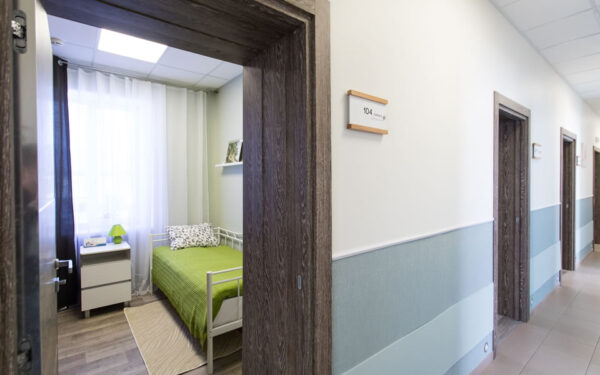HHS Sets Clear Goals and Timeline for Shifting Medicare Reimbursements from Volume to Value

On January 26, 2015 Health and Human Services Secretary Sylvia M. Burwell announced measurable goals and a timeline to move the Medicare program, and the health care system at large, toward paying providers based on the quality, rather than the quantity of care they give patients.
HHS has set a goal of tying 30 percent of traditional, or fee-for-service, Medicare payments to quality or value through alternative payment models, such as Accountable Care Organizations (ACOs) or bundled payment arrangements by the end of 2016, and tying 50 percent of payments to these models by the end of 2018. HHS also set a goal of tying 85 percent of all traditional Medicare payments to quality or value by 2016 and 90 percent by 2018 through programs such as the Hospital Value Based Purchasing and the Hospital Readmissions Reduction Programs. This is the first time in the history of the Medicare program that HHS has set explicit goals for alternative payment models and value-based payments.
To make these goals scalable beyond Medicare, Secretary Burwell also announced the creation of a Health Care Payment Learning and Action Network. Through the Learning and Action Network, HHS will work with private payers, employers, consumers, providers, states and state Medicaid programs, and other partners to expand alternative payment models into their programs. HHS will intensify its work with states and private payers to support adoption of alternative payments models through their own aligned work, sometimes even exceeding the goals set for Medicare. The Network will hold its first meeting in March 2015, and more details will be announced in the near future.
�Whether you are a patient, a provider, a business, a health plan, or a taxpayer, it is in our common interest to build a health care system that delivers better care, spends health care dollars more wisely and results in healthier people. Today�s announcement is about improving the quality of care we receive when we are sick, while at the same time spending our health care dollars more wisely,� Secretary Burwell said. �We believe these goals can drive transformative change, help us manage and track progress, and create accountability for measurable improvement.�
“We’re all partners in this effort focused on a shared goal. Ultimately, this is about improving the health of each person by making the best use of our resources for patient good. We’re on board, and we’re committed to changing how we pay for and deliver care to achieve better health,” Douglas E. Henley, M.D., executive vice president and chief executive officer of the American Academy of Family Physicians said.
�Advancing a patient-centered health system requires a fundamental transformation in how we pay for and deliver care. Today�s announcement by Secretary Burwell is a major step forward in achieving that goal,� AHIP President and CEO Karen Ignagni said. �Health plans have been on the forefront of implementing payment reforms in Medicare Advantage, Medicaid Managed Care, and in the commercial marketplace. We are excited to bring these experiences and innovations to this new collaboration.�
�Employers are increasingly taking steps to support the transition from payment based on volume to models of delivery and payment that promote value,� said Janet Marchibroda, Health Innovation Director and Executive Director of the CEO Council on Health and Innovation at the Bipartisan Policy Center. �There is considerable bipartisan support for moving away from fee for service toward alternative payment models that reward value, improve outcomes, and reduce costs. This transition requires action not only by the private sector, but also the public sector, which is why today�s announcement is significant.�
�Today�s announcement will be remembered as a pivotal and transformative moment in making our health care system more patient- and family-centered,� said Debra L. Ness, president of the National Partnership for Women & Families. �This kind of payment reform will drive fundamental changes in how care is delivered, making the health care system more responsive to those it serves and improving care coordination and communication among patients, families and providers. It will give patients and families the information, tools and supports they need to make better decisions, use their health care dollars wisely, and improve health outcomes.�
The Affordable Care Act created a number of new payment models that move the needle even further toward rewarding quality. These models include ACOs, primary care medical homes, and new models of bundling payments for episodes of care. In these alternative payment models, health care providers are accountable for the quality and cost of the care they deliver to patients. Providers have a financial incentive to coordinate care for their patients � who are therefore less likely to have duplicative or unnecessary x-rays, screenings and tests. An ACO, for example, is a group of doctors, hospitals and health care providers that work together to provide higher-quality coordinated care to their patients, while helping to slow health care cost growth. In addition, through the widespread use of health information technology, the health care data needed to track these efforts is now available.
Many health care providers today receive a payment for each individual service, such as a physician visit, surgery, or blood test, and it does not matter whether these services help � or harm � the patient. In other words, providers are paid based on the volume of care, rather than the value of care provided to patients. Today�s announcement would continue the shift toward paying providers for what works � whether it is something as complex as preventing or treating disease, or something as straightforward as making sure a patient has time to ask questions.
In 2011, Medicare made almost no payments to providers through alternative payment models, but today such payments represent approximately 20 percent of Medicare payments. The goals announced today represent a 50 percent increase by 2016. To put this in perspective, in 2014, Medicare fee-for-service payments were $362 billion.
HHS has already seen promising results on cost savings with alternative payment models, with combined total program savings of $417 million to Medicare due to existing ACO programs � HHS expects these models to continue the unprecedented slowdown in health care spending. Moreover, initiatives like the Partnership for Patients, ACOs, Quality Improvement Organizations, and others have helped reduce hospital readmissions in Medicare by nearly eight percent� translating into 150,000 fewer readmissions between January 2012 and December 2013 � and quality improvements have resulted in saving 50,000 lives and $12 billion in health spending from 2010 to 2013, according to preliminary estimates.
Source:U.S. Department of Health & Human Services – News Division





